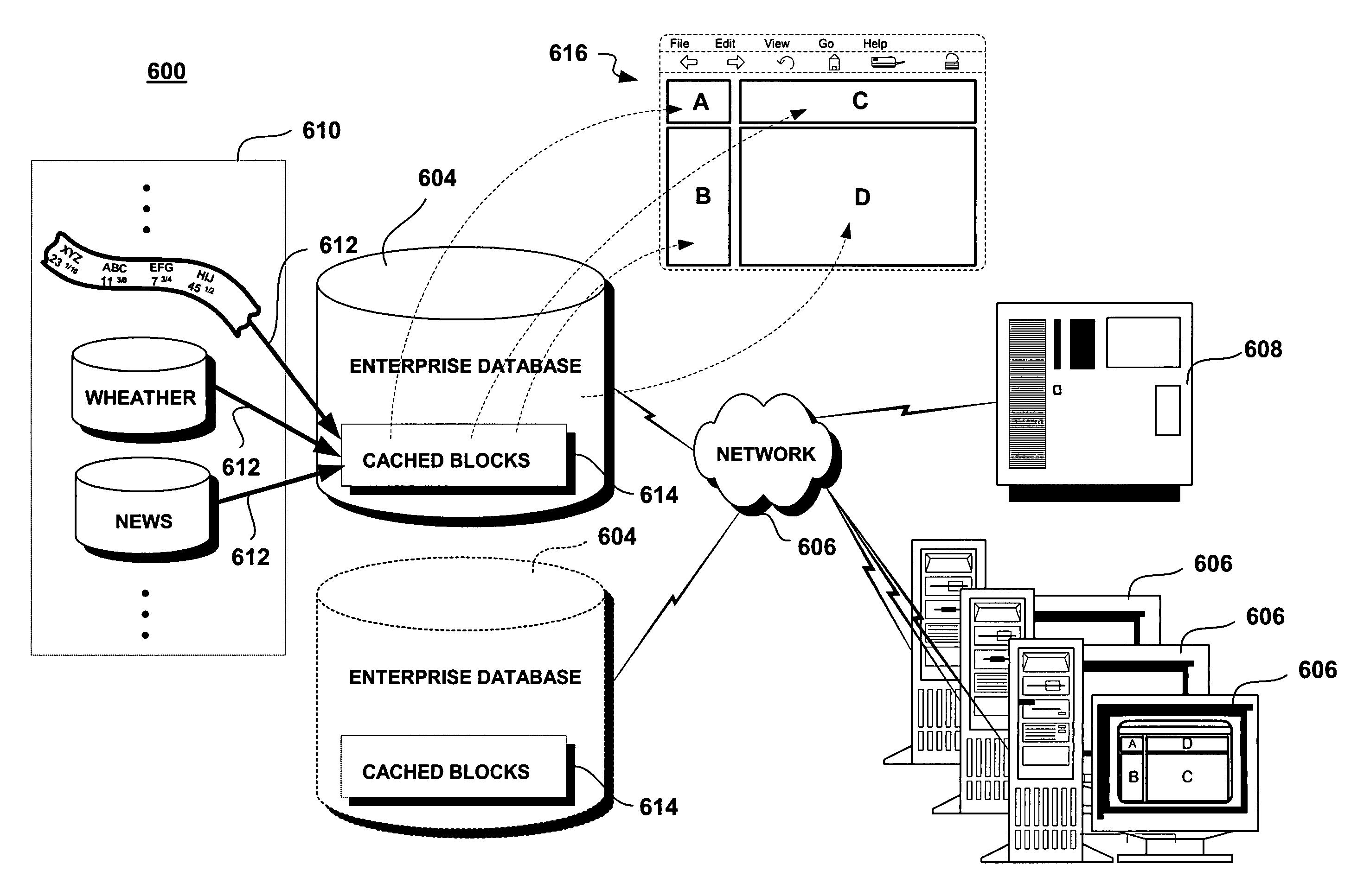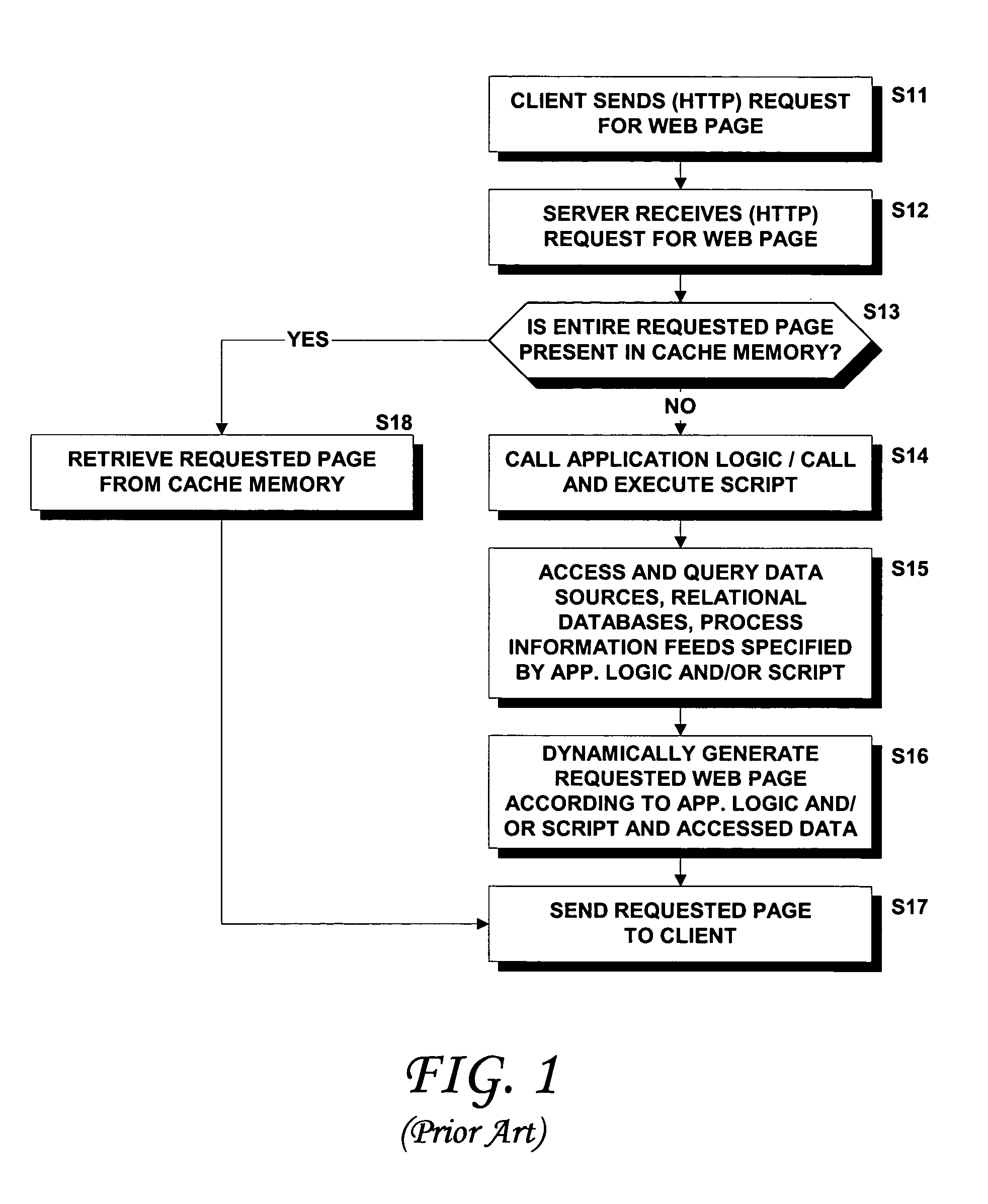Methods and systems for partial page caching of dynamically generated content
a dynamically generated content and page caching technology, applied in the world wide web, can solve the problems of not being able to easily scale the mechanism, not only in terms of storage and processing time, but also in terms of money, and generating web pages in dynamic fashion is a very expensive operation, so as to achieve efficient caching dynamic content and efficiently servicing requests
- Summary
- Abstract
- Description
- Claims
- Application Information
AI Technical Summary
Benefits of technology
Problems solved by technology
Method used
Image
Examples
example 1
[0063]A customer visits an online vendor's e-commerce Web site and browses around the site. If the Web site wishes to display the customer's shopping cart information at all times on all pages that the customer visits, it cannot efficiently cache the response pages if full page caching is used, as the shopping cart information must to be recalculated for every request from the customer. In contradistinction, according to the present invention, the rest of the page (all but the shopping cart) may be advantageously cached. That is, one or more blocks of the requested page, exclusive of the block in which the customer's shopping cart appears, may be cached in memory. For example, blocks that include an item description or user comments on the item may be cached in memory and re-used—not only for subsequent requests from the current user, but for subsequent requests originating from other users as well. The amount of actual code executed for each requested is, therefore, decreased, as m...
example 2
[0064]An e-commerce Web site wishes to display the customer's name on all the pages accessed by a customer to give the customer a more personalized experience. The message displayed on all of the pages, for example, could be something like “Alok's personal shopper”. Even if there is no other information on the page that changes for a given user from request to request, the partial page caching solution according to the present invention is believed to work much better than the conventional methodology of caching full pages. Indeed, using conventional full page caching, the entire page would have to be cached.
[0065]In the case wherein two customers (A and B) are looking at the same catalog item, for example, the Web pages that A and B see may be identical, except for the portion thereof that displays the name of the respective customers or other customized information. If conventional full page caching were to be used, two entire pages would have to be cached. If the pages are large,...
PUM
 Login to View More
Login to View More Abstract
Description
Claims
Application Information
 Login to View More
Login to View More - R&D
- Intellectual Property
- Life Sciences
- Materials
- Tech Scout
- Unparalleled Data Quality
- Higher Quality Content
- 60% Fewer Hallucinations
Browse by: Latest US Patents, China's latest patents, Technical Efficacy Thesaurus, Application Domain, Technology Topic, Popular Technical Reports.
© 2025 PatSnap. All rights reserved.Legal|Privacy policy|Modern Slavery Act Transparency Statement|Sitemap|About US| Contact US: help@patsnap.com



